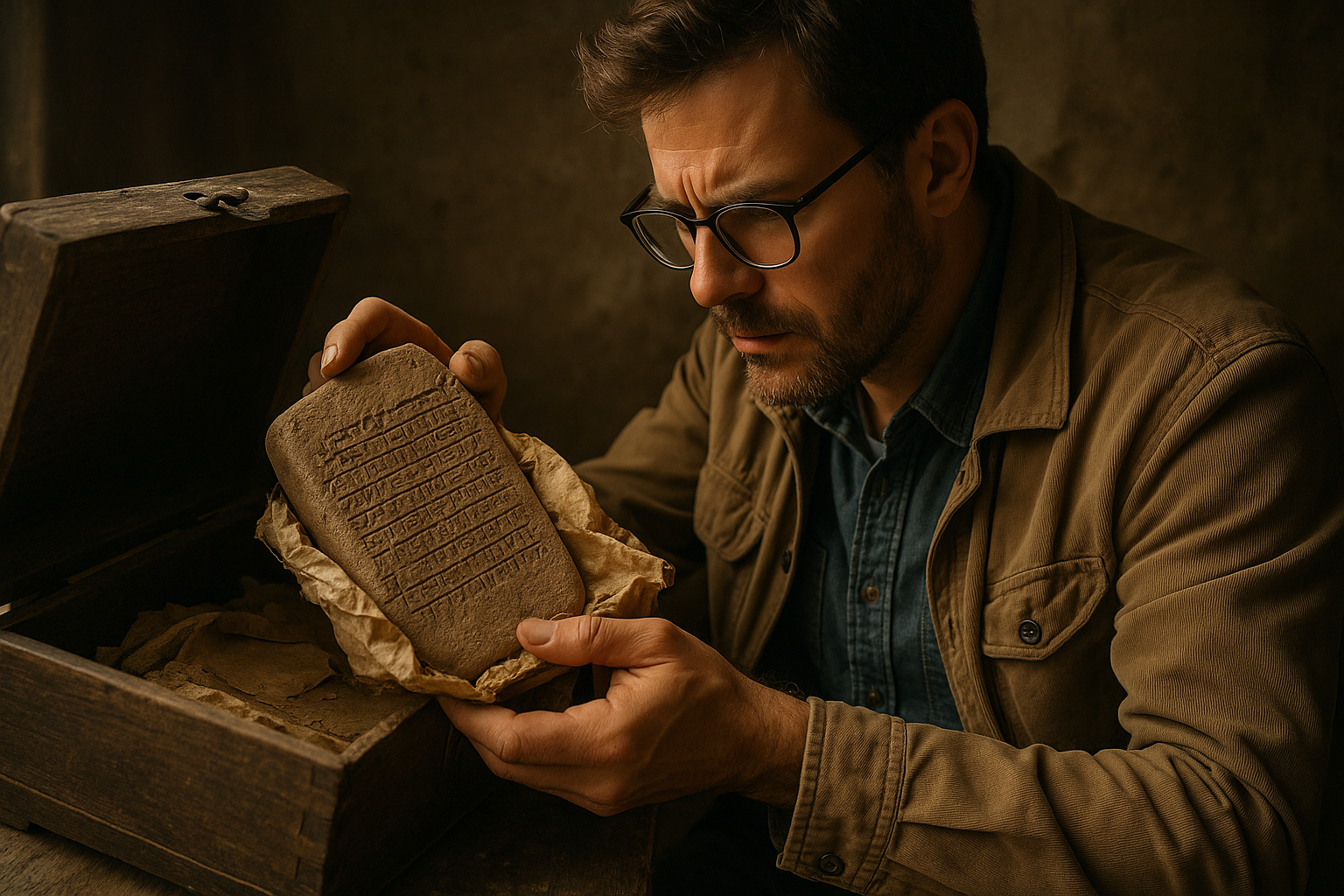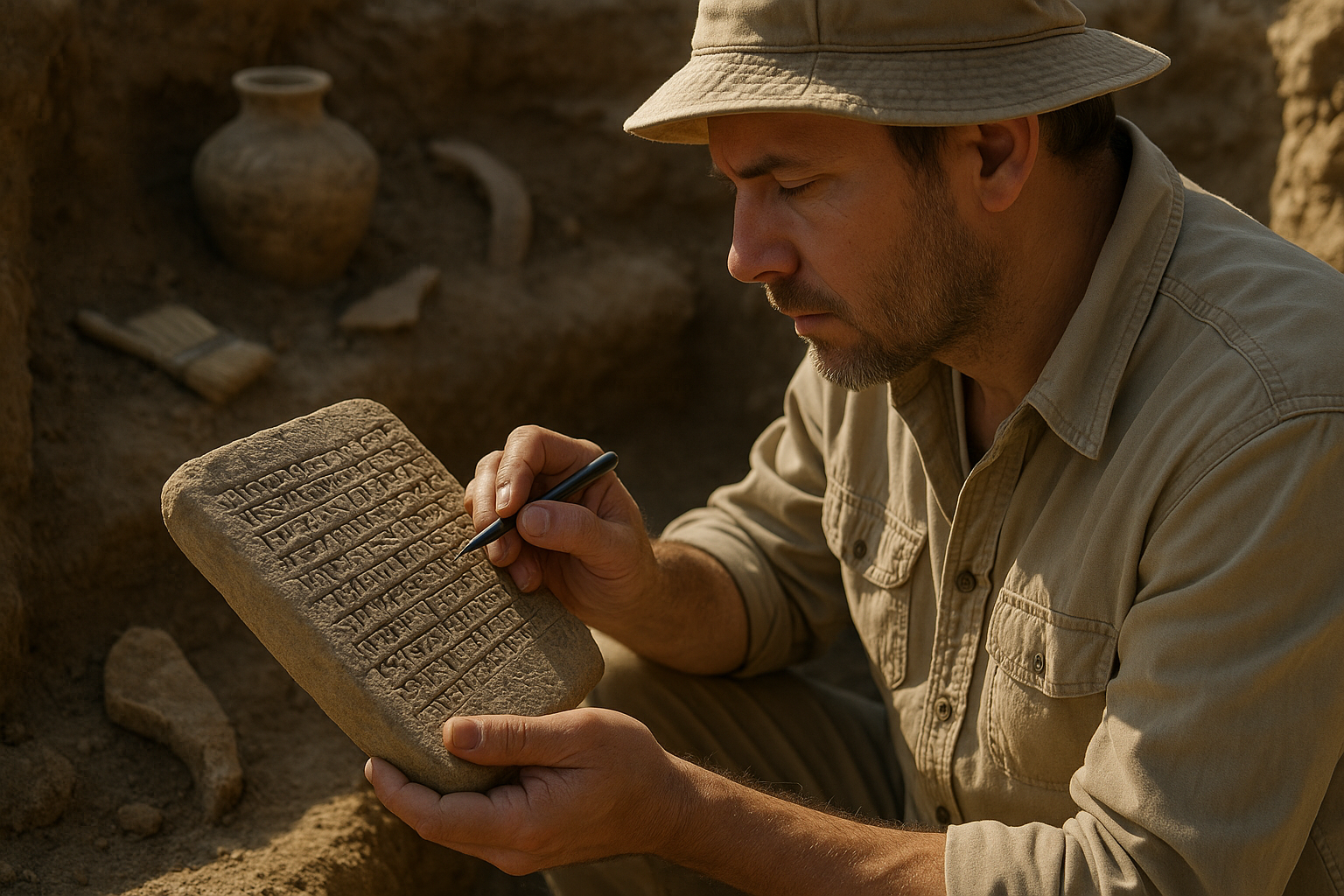Throughout history, humanity has sought meaning in artifacts and prophecies buried beneath layers of time, waiting to reveal their mysteries to those who dare to dig deeper. ✨
The Timeless Allure of Hidden Knowledge
From ancient civilizations to modern archaeological expeditions, the discovery of buried prophecies and symbolic artifacts has captivated scholars, spiritual seekers, and curious minds alike. These hidden treasures offer more than just historical value—they provide windows into the beliefs, fears, and aspirations of cultures long past. The very act of unearthing these objects connects us to our ancestors in profound ways, reminding us that the search for meaning transcends time itself.
Archaeological sites across the globe continue to yield surprising discoveries that challenge our understanding of ancient wisdom. Whether it’s clay tablets inscribed with predictions, ceremonial objects laden with symbolism, or architectural structures aligned with celestial events, each finding adds another piece to humanity’s grand puzzle. The significance of these discoveries extends far beyond academic circles, influencing spiritual practices, inspiring artistic movements, and even shaping contemporary worldviews.
Ancient Prophecies Etched in Stone and Clay 📜
The discovery of prophetic texts buried for millennia has repeatedly reshaped our understanding of ancient societies. The Dead Sea Scrolls, discovered in caves near the Dead Sea between 1947 and 1956, remain among the most significant archaeological finds of the twentieth century. These ancient manuscripts contained biblical texts and prophecies that provided unprecedented insight into religious thought during the Second Temple period.
Similarly, the Nag Hammadi library, uncovered in Egypt in 1945, revealed Gnostic texts that had been deliberately hidden for centuries. These buried prophecies offered alternative perspectives on early Christian theology and cosmology, challenging established narratives and opening new avenues for theological exploration. The careful preservation of these texts demonstrates the immense value their creators placed on transmitting knowledge to future generations.
Cuneiform Tablets and Mesopotamian Predictions
The ancient Mesopotamians were prolific record-keepers, and their cuneiform tablets have provided researchers with extensive prophetic literature. Omen texts, astronomical predictions, and divination records inscribed on clay tablets reveal a sophisticated system of interpreting signs and portents. These buried prophecies weren’t merely superstitious ravings—they represented serious attempts to understand causality and predict future events based on observed patterns.
Many of these tablets were deliberately buried in foundation deposits beneath temples and palaces, serving both as time capsules and as sacred offerings to the gods. The act of burial itself held symbolic significance, representing the planting of knowledge that would germinate in future ages. Modern excavations continue to uncover these treasures, each tablet adding nuance to our understanding of ancient predictive practices.
Symbolic Artifacts: Objects That Speak Across Centuries 🗿
Beyond written prophecies, symbolic artifacts buried intentionally or lost to time carry meanings that resonate across cultural boundaries. These objects—ranging from ritual tools to everyday items imbued with special significance—serve as tangible connections to the symbolic universes of past civilizations. Understanding their context and meaning requires careful analysis of archaeological evidence, cultural practices, and symbolic systems.
The discovery of the Antikythera mechanism, an ancient Greek analog computer used to predict astronomical positions, revolutionized our understanding of technological sophistication in antiquity. This complex artifact, recovered from a shipwreck and buried beneath the sea for over two millennia, demonstrated capabilities that historians didn’t believe possible for ancient civilizations. Its intricate gears and astronomical calculations reveal a level of scientific knowledge that was subsequently lost for centuries.
Sacred Geometry and Architectural Prophecy
Many ancient structures themselves function as buried prophecies, with their architectural features encoding cosmic knowledge and predictive systems. The Great Pyramid of Giza, for instance, incorporates mathematical constants and astronomical alignments that some researchers believe contain prophetic significance. Whether these features represent intentional encoding or remarkable coincidence remains debated, but the precision involved is undeniable.
Stonehenge, Newgrange, and countless other megalithic structures around the world demonstrate sophisticated understanding of celestial cycles. These monuments, partially buried by time and sediment, continue to reveal new secrets as modern technology allows for more detailed analysis. Ground-penetrating radar and 3D modeling have uncovered previously unknown features, suggesting these sites held even greater complexity than surface examination revealed.
The Psychology Behind Prophetic Discoveries 🧠
Why do buried prophecies and symbolic artifacts hold such powerful appeal? The answer lies partly in human psychology and our relationship with time, mystery, and meaning. Discovering something deliberately hidden creates a sense of privileged access to forbidden or lost knowledge. This feeling of uncovering secrets amplifies the perceived value and significance of the discovery.
Furthermore, prophecies discovered after their supposed fulfillment carry special weight. When ancient predictions appear to align with subsequent events, it creates a compelling narrative that transcends coincidence in many people’s minds. This retroactive validation, whether legitimate or the result of interpretive flexibility, reinforces belief in the prophetic power of ancient wisdom.
Confirmation Bias and Pattern Recognition
Human brains are exceptionally skilled at pattern recognition—so skilled that we often perceive patterns where none exist. This tendency, combined with confirmation bias, can lead to seeing prophetic accuracy in texts that may actually be vague, metaphorical, or misinterpreted. The famous predictions attributed to Nostradamus provide a classic example: their cryptic nature allows for multiple interpretations that can be retrofitted to various historical events.
This doesn’t necessarily diminish the cultural or historical value of prophetic artifacts, but it does emphasize the importance of critical thinking when evaluating their significance. The scholarly approach involves examining these objects within their original context, understanding the worldview of their creators, and distinguishing between literal prediction and symbolic expression.
Modern Archaeological Methods Reveal Ancient Secrets 🔍
Contemporary archaeology employs increasingly sophisticated technologies to unearth and interpret buried artifacts and texts. LiDAR (Light Detection and Ranging) technology has revolutionized landscape archaeology, revealing hidden structures beneath dense jungle canopy. This method has led to the discovery of entire lost cities, complete with ceremonial centers that likely served prophetic and symbolic functions.
Ground-penetrating radar allows researchers to “see” beneath the surface without disturbing the soil, identifying potential excavation sites and buried structures. This non-invasive approach has proven invaluable for locating artifacts while preserving archaeological context. Chemical analysis of residues on ancient artifacts reveals their uses, connecting physical objects to ritual practices and symbolic systems.
Digital Reconstruction and Virtual Archaeology
Advanced imaging techniques now allow scholars to read texts on sealed or damaged documents without physically opening them. X-ray fluorescence and multispectral imaging have revealed hidden writings on palimpsests and charred scrolls, recovering prophecies and knowledge that would otherwise remain lost. These technologies represent a new frontier in archaeological research, expanding access to buried knowledge exponentially.
Three-dimensional modeling and virtual reality enable researchers and the public to experience archaeological sites as they might have appeared in antiquity. This technology helps contextualize symbolic artifacts within their original settings, enhancing understanding of their ritual and prophetic significance. The democratization of these experiences through digital platforms brings ancient prophecies to broader audiences than ever before.
Notable Discoveries That Changed Historical Understanding 🌍
Certain archaeological discoveries have fundamentally altered our comprehension of ancient civilizations and their prophetic traditions. The Rosetta Stone, discovered in 1799, provided the key to deciphering Egyptian hieroglyphics, unlocking vast libraries of previously unreadable texts including prophetic and religious documents. This single artifact opened entire civilizations to modern scholarship.
The discovery of Tutankhamun’s tomb in 1922 revealed not only spectacular treasures but also numerous symbolic artifacts related to Egyptian beliefs about the afterlife and cosmic order. The careful burial of these objects reflected a sophisticated theology that viewed death as transformation rather than ending. The prophecies inscribed on tomb walls and papyri demonstrated beliefs about the soul’s journey and eventual rebirth.
The Terracotta Army and Imperial Symbolism
The discovery of China’s Terracotta Army in 1974 unveiled Emperor Qin Shi Huang’s elaborate burial complex, complete with thousands of life-sized warrior statues. This massive undertaking reflected beliefs about the afterlife and the emperor’s continued rule in death. The symbolic significance of this buried army extends beyond military might, representing cosmic order and imperial legitimacy that would persist beyond mortal existence.
Each figure was individually crafted, suggesting that the buried army represented actual soldiers who would serve their emperor eternally. This level of detail indicates a prophetic belief system in which earthly arrangements directly influenced spiritual realities. The continued excavation of this site reveals new chambers and artifacts that expand our understanding of Han Dynasty beliefs and practices.
Interpreting Symbolism Across Cultural Boundaries 🔮
One of the greatest challenges in understanding buried prophecies and symbolic artifacts involves accurate interpretation across vast cultural and temporal distances. Symbols that held specific meanings in their original context may be misunderstood or misappropriated by later interpreters. The swastika provides a sobering example—an ancient symbol of auspiciousness in multiple cultures, forever tainted by twentieth-century misuse.
Responsible interpretation requires extensive contextual knowledge, linguistic expertise, and cultural sensitivity. Scholars must resist the temptation to impose contemporary frameworks onto ancient artifacts, instead striving to understand them within their original belief systems. This approach sometimes reveals that what appears prophetic to modern eyes served entirely different functions in antiquity.
Universal Symbols and Human Archetypes
Despite cultural differences, certain symbols appear repeatedly across unconnected civilizations, suggesting shared human psychological patterns. The serpent, for instance, appears in prophetic and mythological contexts from Mesoamerica to Mesopotamia, often representing transformation, wisdom, or cosmic forces. These recurring motifs point to universal aspects of human consciousness that transcend specific cultural expressions.
Carl Jung’s concept of archetypes provides one framework for understanding these cross-cultural similarities. According to this theory, certain symbolic forms arise from the collective unconscious, appearing independently in different cultures because they reflect fundamental human experiences and psychological structures. Buried artifacts containing these symbols thus connect to something deeper than cultural transmission—they tap into shared human consciousness.
The Ethical Dimensions of Unearthing the Past ⚖️
Archaeological excavation raises important ethical questions about who has the right to unearth, study, and possess cultural artifacts. Indigenous communities worldwide have advocated for the return of sacred objects removed from burial sites and ceremonial contexts. These artifacts often hold spiritual significance that transcends academic or monetary value, making their excavation and display controversial.
The debate over the Elgin Marbles, Native American burial goods, and countless other artifacts highlights tensions between scientific inquiry and cultural respect. Many argue that these objects belong to the descendant communities whose ancestors created them, not in museums far from their places of origin. This perspective recognizes that buried artifacts aren’t merely historical curiosities—they’re living connections to cultural identity and spiritual practice.
Balancing Preservation and Access
Museums and institutions face the challenge of preserving fragile artifacts while making them accessible to researchers and the public. Climate-controlled environments protect objects from deterioration, but removing artifacts from their original contexts can strip away meaning. Digital documentation and repatriation of less fragile items represent compromise solutions that respect both preservation needs and cultural claims.
Some communities have developed collaborative archaeological programs where indigenous knowledge and scientific methods work together. These partnerships produce richer interpretations of symbolic artifacts and prophetic texts by incorporating traditional understanding alongside academic analysis. Such approaches model how unearthing the past can honor those who created and buried these treasures.
Contemporary Relevance of Ancient Wisdom 💫
Why do ancient prophecies and symbolic artifacts continue to fascinate modern audiences? In an age of scientific advancement and technological progress, the appeal of buried wisdom from antiquity speaks to persistent human needs for meaning, connection, and transcendence. These artifacts remind us that fundamental questions about existence, purpose, and destiny have occupied human minds across millennia.
Some find in ancient prophecies relevant guidance for contemporary challenges. Environmental prophecies from indigenous traditions, for instance, are increasingly cited in discussions of climate change and ecological crisis. Whether these texts actually predicted modern situations or simply expressed timeless wisdom about human-nature relationships remains debated, but their resonance with current concerns is undeniable.
Symbolic Artifacts in Modern Spiritual Practice
Contemporary spiritual movements often incorporate symbols and practices derived from archaeological discoveries. The popularization of ancient goddess figurines, rune stones, and other unearthed artifacts has influenced modern paganism, New Age spirituality, and eclectic religious practices. These movements draw on buried knowledge to construct spiritual systems that feel rooted in deep history, even as they adapt ancient symbols to contemporary contexts.
Critics argue that such appropriation misrepresents historical artifacts and projects modern values onto ancient objects. Supporters counter that spiritual practices naturally evolve and that engaging with ancient symbolism keeps these traditions alive rather than relegated to museums. This tension between historical accuracy and living tradition characterizes much of the contemporary engagement with buried prophecies and artifacts.
The Ongoing Quest for Hidden Knowledge 🗝️
Archaeological excavation continues worldwide, with new discoveries regularly making headlines and challenging established narratives. Satellite imagery and artificial intelligence now assist in identifying potential excavation sites, analyzing patterns invisible to human observers. These technologies promise to accelerate the pace of discovery, potentially revealing prophecies and artifacts that have remained hidden for thousands of years.
Underwater archaeology represents a particularly promising frontier, with vast areas of seabed remaining unexplored. Submerged cities, shipwrecks, and ceremonial sites buried beneath waves hold untold treasures of symbolic artifacts and texts. As diving technology improves and underwater drones become more sophisticated, these aquatic time capsules will yield their secrets to patient researchers.
The excitement surrounding each new discovery demonstrates that the human appetite for buried knowledge remains insatiable. Whether driven by academic curiosity, spiritual seeking, or simple fascination with mystery, the quest to unearth prophecies and symbolic artifacts continues to unite people across cultures and perspectives. Each excavation represents hope that the past still has wisdom to offer the present and future.

Preserving Mysteries for Future Generations 🌟
As we unearth the secrets of past civilizations, we must also consider what knowledge we’re creating and preserving for future archaeologists. Digital storage, while seemingly permanent, faces challenges of format obsolescence and data degradation. Ironically, clay tablets and stone inscriptions may outlast our electronic archives, raising questions about how contemporary prophecies and symbols will survive for future discovery.
Some artists and thinkers have created deliberate time capsules, burying artifacts and predictions for future generations to unearth. These projects reflect awareness of our place in the long chain of human civilization, acknowledging that we too will eventually become the ancients whose buried wisdom future people seek to understand. This perspective encourages humility and thoughtfulness about the legacy we leave behind.
The secrets revealed through buried prophecies and symbolic artifacts ultimately teach us about continuity and change in human experience. While technologies evolve and civilizations rise and fall, fundamental human concerns remain remarkably consistent. The artifacts we unearth speak to us across millennia because they address questions we still ask: What does it mean to be human? What lies beyond death? How should we live? These eternal questions ensure that the search for buried wisdom will continue as long as humans wonder about their place in the cosmos.
Toni Santos is a temporal researcher and symbolic archaeologist specializing in the study of forgotten burial systems, sacred archival practices, and the visual languages embedded in ancient temporal lore. Through an interdisciplinary and artifact-focused lens, Toni investigates how humanity has encoded knowledge, memory, and mystery into the temporal world — across cultures, rituals, and vanished civilizations. His work is grounded in a fascination with time capsules not only as vessels, but as carriers of hidden meaning. From extinct burial ritual practices to mythical codices and secret temporal seals, Toni uncovers the visual and symbolic tools through which cultures preserved their relationship with the temporal unknown. With a background in design semiotics and temporal artifact history, Toni blends visual analysis with archival research to reveal how time capsules were used to shape identity, transmit memory, and encode sacred knowledge. As the creative mind behind eltonxy, Toni curates illustrated chronologies, speculative temporal studies, and symbolic interpretations that revive the deep cultural ties between artifacts, ritual markings, and forgotten messages. His work is a tribute to: The lost temporal wisdom of Forgotten Time Capsule Burial Rituals The guarded archives of Sacred Codices and Forgotten Temporal Archives The mythopoetic presence of Temporal Symbols and Ritual Markings The layered visual language of Vanished Artifacts and Temporal Messages Whether you're a temporal historian, symbolic researcher, or curious gatherer of forgotten chronological wisdom, Toni invites you to explore the hidden roots of time capsule knowledge — one seal, one glyph, one message at a time.




